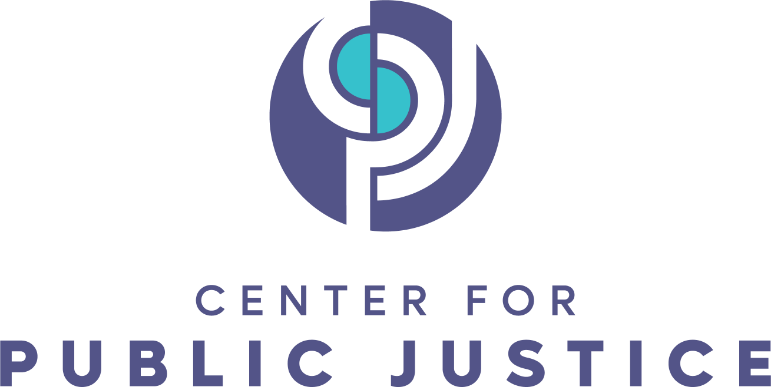
Across the United States, millions of Americans are at a higher risk for housing insecurity, while those experiencing homelessness have fallen deeper into its vicious cycle as they strive to adjust to the ‘new normal’ rapidly catalyzed by the COVID-19 pandemic. The 2021 Annual Homeless Assessment Report published by the U.S Department of Housing and Urban Development (HUD) found that the unsheltered homeless population count remained stagnant across a sample of 138 U.S. communities with minimal improvement. In fact, the number of unsheltered individuals increased in rural communities and large urban Continuum of Cares (CoC), with unsheltered individuals in families increasing in all geographic categories. A CoC is a regional or local planning group composed of homeless service providers, government leaders, faith-based organizations, mental health service providers, school district representatives, and other key stakeholders. This body is responsible for coordinating funding of homeless services and housing programs for individuals and families experiencing homelessness.
U.S inflation, including rising rent costs, has made the risk of homelessness a daunting possibility while further exacerbating existing barriers for those striving to exit homelessness. According to the U.S Government Accountability Office, an estimated $100 increase in median rent was correlated with a 9% rise in the estimated homelessness rate. The Zillow Observed Rental Index (ZORI) reported that the average rent rose by 15.9 percent from May 2021 to May 2022 across all housing types. As local, state, and federal policymakers seek to address the housing crisis now heavily exacerbated by COVID-19, they must reassess the impact of current Housing First policies — including their long-term effectiveness in eradicating homelessness.
The Housing First model prioritizes stable housing as a fundamental human right, serving homeless individuals and families by providing permanent housing as soon as it is available, despite other needs or barriers. Moreover, all agencies and programming should eliminate pre-existing barriers to housing access, such as mental health stability, sobriety from drugs and alcohol, and absence of a criminal record. This approach is based on a “hierarchy of need” system: folks must have access to their basic needs, such as food and a safe shelter, before improving their quality of life (e.g., improved physical health, increased financial stability, decreased harmful behaviors, improved mental health outcomes, etc.). The Housing First approach promotes individual self-determination in service provision; therefore, folks are not required to participate in supportive services to access or keep permanent housing.
In 1992, the Housing First Model was introduced to the U.S through the homeless services organization Pathways to Housing in New York City. Pathways to Housing provides individuals experiencing homelessness who present psychiatric illness and/or substance use disorders with access to permanent housing without meeting preexisting requirements of participation in mental health treatment or sobriety. Following suit, many programs based on the Housing First model were developed and implemented in the U.S.
In 2000, the George W. Bush administration initiated the “Chronic Homeless Initiative” which recommended states and localities to develop 10-year strategic plans to end chronic homelessness. Over 350 states and localities advocated for utilizing a Housing First approach to end homelessness. During the Obama administration, the U.S Interagency Council on Homelessness, HUD, and the Department of Veterans Affairs further endorsed the integration of the Housing First approach into strategic actions in addressing homelessness. This endorsement was heavily emphasized in the Obama administration’s federal strategic plan to prevent and end homelessness. Within the past two decades, the U.S federal government has strictly regulated adherence policy to Housing First for state and local agencies seeking homeless services funding from HUD. In fact, in 2016 California required homeless service agencies that receive state funding to implement Housing First in their programming. Consequently, transitional housing unit inventory has significantly declined while Permanent Supportive Housing (PSH) programming heavily aligned with Housing First philosophy continues to increase. The first two and a half years of the Trump administration strongly aligned with housing first policy, but shifted with the 2019 fiscal year Notice of Funding Availability (NOFA) which embraced Housing First during initial entry but opened the door for service participation requirements among clients as they navigate federally funded housing programs. However, Housing First advocates criticized the NOFA 2019 shift, leading Congress to require HUD to readopt the prior fiscal year language for the 2020 NOFA. The Trump administration opposed the Housing First approach due to the lack of success from California’s 10-year strategic plans to end homelessness, including the rise of homelessness in San Francisco and Los Angeles.
BENEFITS TO HOUSING FIRST
The Housing First approach benefits both individuals and families experiencing varying degrees of homelessness and complex service needs. The model can be implemented to serve a single mother with two children who has fallen into homelessness as a result of financial instability and may benefit from the implementation of specific supportive services, such as access to permanent housing assistance services tailored to her unique needs. Simultaneously, research has shown that the Housing First approach is highly effective in addressing homelessness among chronically homeless populations, including those with high service needs.
Two common types of housing programs guided by Housing First principles, Permanent Supportive Housing and rapid rehousing, have shown a growing body of evidence demonstrating its effectiveness. PSH clients have demonstrated an estimated 98 percent rate of retention, with residents reporting an increase in perceived autonomy and independence. Data shows that most clients utilize optional supportive services offered through PSH, promoting greater housing stability. Additionally, those who utilize supportive services have a higher likelihood of participating in job training and vocational programming, attending school, reducing substance use, and lower rates of hospitalization and likelihood of domestic violence. The Housing First approach is also more economical; housing accessibility has a significant correlation with cost efficiency in communities as housed folks have a lower likelihood of using emergency services such as hospitals, jails, and emergency shelters compared to those who are homeless. In fact, a study revealed that a Housing First program may cost up to $23,000 less per individual per year than a shelter program.
PROBLEMS OF HOUSING FIRST
The prioritization of Housing First led many Continuums of Care, including direct frontline homeless service providers, and faith-based and community-based organizations, to remove participation requirements of supportive services consisting of beneficial wraparound interventions unique to an individual’s needs. Homeless programs and organizations across the U.S began tailoring their interventions toward Housing First to continue receiving federal financial assistance from HUD.
Many critics of the housing first approach cite the voluntary component of supportive services as a barrier to those with complex needs. Following the policy shift towards removing supportive service participation requirements for those receiving homeless assistance, the unsheltered homeless count increased from 175,399 in 2014 to 211,293 in 2019, a shocking 20.5 percent rise within five years. Despite favoring housing first policies, homelessness has dramatically increased in cities such as San Francisco, Los Angeles, New York City, and Seattle, even with embracing the model as the key solution to ending homelessness. Although Housing First policies have shown to decrease homelessness in some major cities, this increase in homelessness is likely due to other factors. The rise in homelessness in these regions is related to a deeper, complex problem consisting of multiple factors. Serious consideration should be made toward high real estate costs and rental property contributing to the rise in homelessness within these cities. However, the one-size-fits-all approach of the Housing First model may be detrimental to many subpopulations experiencing homelessness who would benefit from a structured, trauma-informed supportive service approach that is uniquely tailored to their individual needs.
According to the USICH, the Housing First model strives to improve accessibility to supportive services with the goal of improving overall quality of life. However, the optional engagement in services increases the risk of potential barriers to retrieving support such as: difficulty navigating systems of care and lack of efficient service approaches. For example, the philosophy of Housing First may conflict with services associated with the U.S child welfare system and families with children. Although risk factors associated with child wellbeing can occur within a housing first setting and must be addressed, the complexities of some circumstances involving parents are conflicting. A mother who is developing a substance use disorder (SUD) may be ambivalent to reach out for treatment or support in fear that she would have her child(ren) detained, thus increasing the risk of her SUD severity while effecting family stability and well-being.
Although many folks benefit from the autonomous nature of housing first, those experiencing significant debilitation from substance use or psychiatric disorders may not be able to maintain their permanent housing unit once received. Those who may require structure or a step-by-step approach to achieving sobriety may lack the proper support for their specific circumstances. Additionally, despite supportive services being widely available under Housing First, service utilization is not incentivized, nor are there adverse consequences from providers if services are not used. Despite the Housing First model’s aim to provide affordable and stable housing for all experiencing homelessness, African American/Black folks continue to disproportionately account for 39 percent of individuals experiencing homelessness and 50 percent of homeless families with children. This poses the question — does the Housing First approach fail to address racial disparities in homelessness? Housing discrimination may also occur among people of color seeking a permanent housing unit through a Housing First program. Specifically, people of color seeking a rental unit through rapid rehousing may experience more difficulty securing housing. A study by HUD found that racial minorities were shown fewer rental units and denied more leases than White folks.
MOVING FORWARD: A PUBLIC JUSTICE APPROACH
“He raises the poor from the dust and lifts the needy from the ash heap; he seats them with princes and has them inherit a throne of honor.” (1 Samuel 2:8.). As children of Christ, we are called to unconditionally love and care for our neighbors. As disciples of God, we must care for those who are lacking one of life’s most vital resources – a stable home. In society, government and civil institutions (i.e., churches, faith-based organizations, nonprofits, etc.) are called to contribute to human flourishing while holistically promoting the well-being of all communities.
“Children and families are the foundation of a strong society; thus government and civil society must work together to ensure that the social safety net is robust and able to be utilized across all backgrounds.
Children and families are the foundation of a strong society; thus government and civil society must work together to ensure that the social safety net is robust and able to be utilized across all backgrounds. Although Housing First policies aim to promote flourishing among individuals, families, and children by providing safe and permanent homes for its tenants, they may have adversely complicated this vision by becoming the primary housing solution for folks experiencing homelessness. Permanent housing that is both stable and affordable is a key solution to ending homelessness — but can housing alone end its vicious cycle exacerbated by factors such as poverty, mental illness, poor physical health, and substance use disorders to name a few?
From a public justice approach, the government has the civic responsibility to ensure that anyone experiencing homelessness has access to safe and adequate housing through the distribution of homeless assistance funding and authorization of affordable housing development across the country. In addition to the housing first approach, the federal homeless assistance budget should be expanded to include alternative housing programs that provide structure and a step-by-step approach to achieving stability and independence. Government should take a multi-sector approach to preventative measures that prevent and end homelessness, including strategies to expand integrated healthcare, workforce education and training, and strengthening the current coordinated systems of care that respond to homelessness across the U.S. For example, by allowing local CoC’s and homeless service providers to take the lead in determining what type of housing program and supportive service approach is most effective for the population they serve, homelessness may be more effectively eradicated.
GOVERNMENT
The government has a responsibility to legislate, enforce, and make formal decisions on public policies and laws that govern the safety and welfare of all citizens within its political community. The purpose of government is to maintain a healthy balance of complex social and ecological processes that may affect long term well-being, such as housing stability. The moral and ethical responsibility of the government to promote the social welfare of its citizens – including their dignity, worth, and human rights, is pivotal in addressing homelessness. Homelessness violates these factors, and children, families, and marginalized individuals experience extensive, adverse outcomes that impact them individually and their communities at large. Therefore, the government must uphold its responsibility in implementing equitable and innovative housing policies that meet the holistic needs of those experiencing homelessness.
Currently, the federal government’s primary mechanism for addressing homelessness is facilitated by HUD who distributes funding to states through homeless assistance grants who provide housing and supportive services across communities at the local level. Additionally, funds are streamlined through the Emergency Solutions Grant (ESG) program and CoC’s — both primary entities in the homeless services system. CoC’s fund various housing types such as permanent supportive housing, rapid-rehousing, and transitional housing while supporting their coordinated entry systems.
Today, homelessness continues to be further exacerbated by the affordable housing crisis – with more than 6.8 million affordable housing units needed to support very low-income families across the nation. U.S renters across the country cannot afford a two-bedroom apartment working a minimum wage, full-time schedule. The government must uphold their responsibility of providing very low-income families with homeless assistance and supportive services to address their housing insecurity and stabilize the family unit.
The role of the government in addressing the roots of homelessness must include funding an expansive network of homeless assistance and housing programs that meet the needs of all subpopulations experiencing homelessness. In addition to PSH and rapid rehousing guided by housing first policies, transitional housing and emergency shelter funding should increase to meet the needs of those experiencing different stages of homelessness. For some folks, the motivation to acquire stability and independently support themselves may be low as a result of feeling “stuck” due to the delay in accessing permanent, affordable housing. Emergency and transitional housing serve as shelters for those awaiting a permanent solution. Therefore, the federal government should consider increasing funding in these target areas.
CIVIL SOCIETY
The unique roles of civil society are essential in holistically addressing homelessness and the risk factors that contribute to its existence. Civil society is composed of many organizations including churches, schools, faith-based organizations, advocacy groups, and culturally centered institutions. In many cases, these organizations engage directly with communities who may be experiencing homelessness and are responsible for providing supportive services (e.g., street outreach, temporary shelter, medical and mental health services, case management, housing support, etc.). Civil society’s direct connection to folks experiencing homelessness provides them with a meaningful advantage to address its complex causes and barriers.
Government has the responsibility to collaborate with civil society and other nongovernmental organizations to eradicate homelessness. For many folks experiencing homelessness, rehabilitative services are a critical element in the road to stability and independence. Homeless service organizations, such as Marian House located in Baltimore, Maryland, serve as leading organizations in the provision of transitional housing, PSH, and supportive services for formerly homeless families and women– including those exiting the criminal justice system. During fiscal years 2012 to 2017, 94 percent of residents who completed Marian’s transitional housing program reported an increase in housing stability, 91 percent report confidence in their ability to pay their rent in a timely manner, 85 percent report that their income has increased since they exited Marian House, and 99 percent report that the program improved their quality of life. Of Marian House program completers, 94 percent report that the program was key to their success and that they would have not been able to achieve similar results living in independent housing with supportive services. As the federal government evaluates budget policy proposals to fund housing programs and homeless assistance, heavy consideration should be influenced by innovative programming such as that offered by the Marian House.
A key role of civil society includes advocacy efforts for housing policies that support an array of populations experiencing homelessness. Civil society organizations such as nonprofits and schools can provide meaningful data that demonstrates the effectiveness of their homeless services. Moreover, they may serve as a foundation for strategic planning among governmental agencies focused on addressing homelessness.
Civil society organizations have a responsibility to address homelessness as they have a unique perspective to understand the complex needs of the individual and communities they serve. They carry an in-depth scope on the social issues that impact folks experiencing homelessness and can therefore provide vital resources that restore social well-being, health, and promote economic security. The relational approach that many civil society organizations utilize in the provision of homeless services provides them with the ability to assess the needs of their clients and propose solutions that would potentially be overlooked by government leaders.
One steward in Long Beach, CA evaluates their social impact on addressing homelessness on an annual basis. Century Villages at Cabrillo (CVC) is a 27-acre supportive housing community that provides emergency and permanent supportive housing to 2,200 residents each year, with more than 600 children and their families served on a given night. CVC creates the space for a collective impact by coordinating over a dozen on-site and 30 off-site agencies to provide holistic supportive services to its 815 households. Supportive services include case management, mental health services, advocacy, financial literacy, workforce education and training, parenting training and other valuable services. With a reported 98 percent of residents retaining their permanent housing in 2021, CVC’s impact demonstrates the value of civil society’s effort in eradicating homelessness.
To meet the needs of the whole person in addressing homelessness, civil society organizations must not be strictly limited in how they execute their homeless services programming. Federal funding for housing programs should be determined by grant processes that allow civil society organizations to determine which type of housing program best aligns with their mission and abilities for effective execution. However, it’s critical that housing policies continue to prioritize affordable, permanent housing development while ensuring that civil society organizations are equally equipped to provide comprehensive supportive services.
CONCLUSION
A stable home is a determinant to optimum health and a fundamental cornerstone in human flourishing. Housing First policies serve an important role in addressing housing instability for those experiencing various types of chronic homelessness due to poverty, chronic health issues, and the affordable housing crisis to name a few. Although Housing First has been very effective in decreasing homelessness and improving housing stability, it should not be the only available step in one’s journey out of homelessness. Government should collaborate with civil society to determine how to amend housing first policies so that other housing programs (e.g., emergency shelter, transitional housing, etc.) can flourish and increase their capacity to provide essential services.
Daniel Arthur Montoya (Hatfield Recipient ’20) is a Social Worker and a graduate of California State University, Long Beach, earning his Master of Social Work with a specialization in Integrated Health. His research interests include evaluating federal housing programs to expand affordable housing and accessibility for all communities experiencing homelessness.
WANT TO GET INVOLVED?
1. Sign up to receive Shared Justice’s monthly newsletter and stay up to date on the latest content, resources, and highlights.
2. Write for us! Email sjsubmissions@cpjustice.org for more information.
3. Form a Political Discipleship group to practice meaningful political engagement in your community. The Center for Public Justice’s Political Discipleship is a guide for active Christian citizenship, designed to empower people with skills and tools to shape policy and address inequality and injustice in their communities. To learn more about starting a group, visit our website or contact emily.fromke@cpjustice.org






